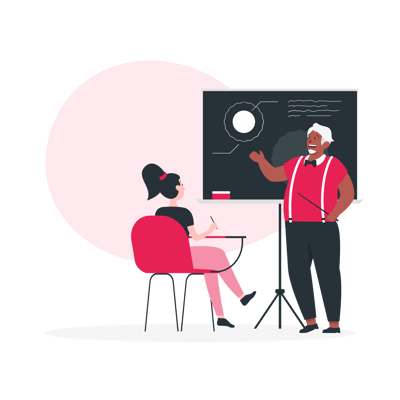Formal Observation #2

Formal Observation #2: Classroom Diversity and Social Justice Practices
Kamille Delgardo
Department of Education, CSU Chico
EDTE 255: Introduction to Democratic Perspectives in K-12 Teaching
Lindsey Serrao
December 4, 2024
In the second half of this class I’ve had the opportunity to observe diverse secondary classrooms from all over the United States. Teachers I’ve observed have used multiple methods to create equitable learning environments in their classrooms. These have included teaching practices that employ assistive technology, grow global competence, reinforce equitable classroom rules, practices, and account for natural learning opportunities for differing student experience. I will be examining how these teaching practices address diverse student learning styles and preferences. I will also address the ideas I will take and those I will leave behind after considering these observations and my TEACH textbook readings.
A relatively simple but important teaching practice I will be taking with me as I enter the classroom is the use of assistive technology. As a person with a disability I think it’s very easy with today’s technology to incorporate things like video captioning, text-to-speech or speech-to-text software, and interactive displays. Not only do they allow more students to access curricula, assistive technologies can improve learning for all students by incorporating both visual and aural expression for all material. In speaking with a currently credentialed teacher it’s clear they’re using technology and adaptive practices as a Tier 1 support available for all students. In Case 562 (“Learning How to Start a Conversation”) there were no assistive technologies in use despite the lesson taking place in a special education classroom. Having worked in the largely unregulated software industry, accessibility practices were always an ideal but rarely given development time. I will ensure accessibility practices are at the forefront in my classroom.
Today’s world is more global than at any point in history. Our students will not only be competing with other Americans for future jobs, they will have to navigate a global economy and workforce. Case 203 (“Determining the Influence of Media on American Culture and Stereotypes”) was a lesson that got students thinking about world cultural perspectives versus American media representation. Many students may never leave their country or even their state, so it’s important to include diverse perspectives in lessons in order to expand students’ minds and grow their critical thinking skills. It also gives us a chance to challenge innate or taught supremacist ideas that students might unknowingly be bringing into the classroom. I believe that Common Core standards we will be using in our lesson planning are (for better or worse) meant to make our students globally competitive by giving all students a baseline knowledge in English Language Arts, Math, and Science. We can see whether American students are globally competitive through measures like the Programme for International Student Assessment (PISA). Global competence and perspectives can also celebrate classroom diversity by giving marginalized groups more access to content that matches their lived experience and heritage. I think if the class makeup allowed it I would have leaned into celebrating diversity by maybe allowing students to report on and argue about cartoons and media from their own cultures.
Students from increasingly diverse backgrounds can make it more difficult but more important to reinforce equitable classroom rules, policies, and procedures. We know that different cultures have different ideas of respect and authority; our classroom norms for “appropriate behavior” are often defined by white, middle-class cultural norms which fall short for students not in this demographic. Developing a classroom behavior management plan should take these differences into account, but as evinced by case 1080 (“Understanding Why Scientists Investigate the Natural World”) that doesn’t mean they can’t be fun while being effective. The teacher in this observation used tons of positive but firm reinforcement to keep students on task and engaged. I will definitely employ some of her ideas going forward in my teaching journey.
Case 1018 (“Applying Mathematical Concepts in a Real-World Context”) demonstrated giving natural learning opportunities for inclusion classrooms with differing student experience. Although an honors class the teacher noted she had to account for diverse experiences of the classe’s physically and mentally disabled students, minority students (being a magnet school) and a sprinkling of Gifted students. One thing they all had in common is Angry Birds, a popular mobile game at the time. The teacher integrated this popular game into a math lesson to determine equations for trajectory and then actually launch their own angry birds. As a student this lesson would have been very engaging. It would have been rewarding to apply abstract mathematical concepts to a real-world physics situation.. In order to make sure all groups had the opportunity to succeed the teacher successfully integrated students by placing a “gifted” student in each group of 3 and made sure that each group wasn’t made up of only one year. It was probably a lot of work to set up, but the students seemed to get a ton out of the exercise and the groupings.
This semester I’ve learned that there is much more that goes into teaching than I ever knew, despite being a third-generation educator in training). America is only becoming more and more diverse economically, socially, racially, and linguistically and it’s our job as teachers to ensure equitable access to a Free and Appropriate Public Education for every student regardless of background.
